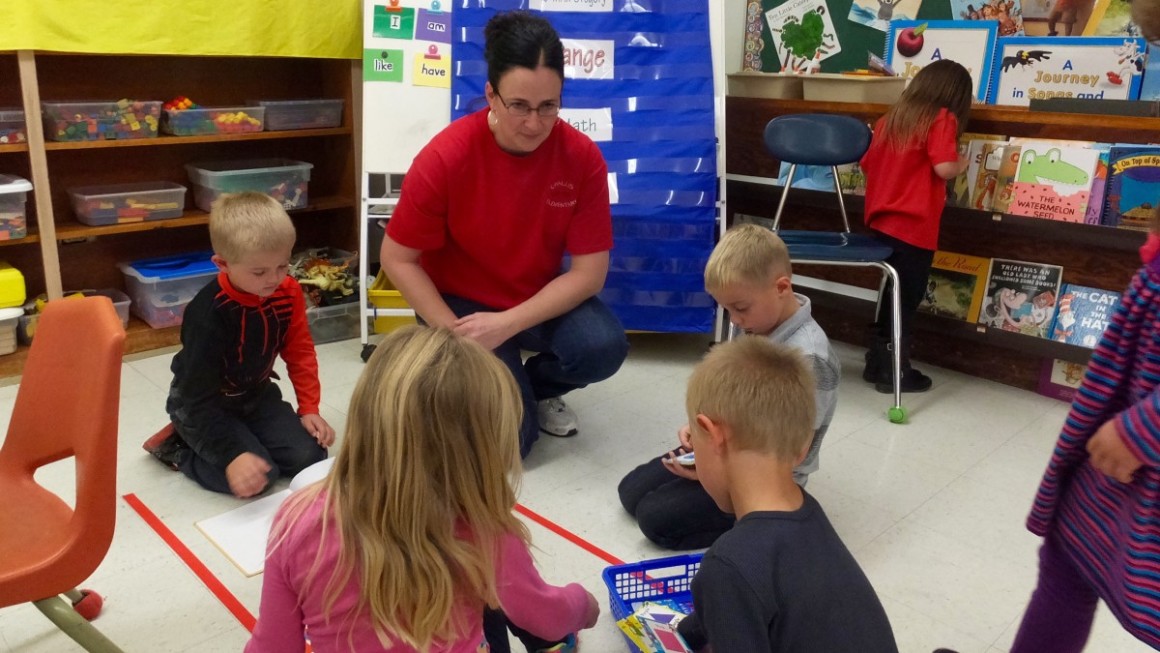 In four-day schools in every corner of Idaho, the three-day weekend begins today — and every Friday.
In four-day schools in every corner of Idaho, the three-day weekend begins today — and every Friday.
Plans for the “off” day vary as widely as the schools that have adopted the four-day calendar, and the families and students directly affected by this education experiment.

In some schools, Friday is a day for teacher training or collaboration. Elsewhere, teachers catch up on paperwork or take the day off.
Some students spend Fridays catching up on classwork, working on the family farm or taking the bus for a long roadtrip to a football game. Some run errands with parents. Some are in daycare. Others fend for themselves, which concerns local educators.
In the grand bargain that is the four-day schedule, Fridays represent the biggest tradeoff of all: four long school days, in exchange for a free weekday. Critics consider Friday a wasted day. Supporters covet flexible Fridays.
The grassroots popularity isn’t based in data or evidence. But it helps explain how the four-day schedule has become engrained in small-town Idaho.
Fridays for teachers
When Fred Ball was hired as administrator of the Blackfoot Charter Community Learning Center, he knew what he wanted to do first. He wanted to ditch the school’s four-day calendar.
“Rescheduled Education” examines Idaho’s four-day schools — and the effect on students and teachers, parents and families, taxpayers and communities. Idaho Education News and Idaho Public Television interviewed school leaders, parents and students in more than 15 four-day school districts and charter schools and conducted an online survey of superintendents and school administrators. Reporters also interviewed Idaho’s political and education leaders, and academic experts and education agencies from more than half a dozen states. Reporters also reviewed national research on four-day schools — and compiled and combed Idaho test scores and student data.
That was 10 years ago. The calendar remains unchanged. But Ball’s mind has changed.
“It’s one of the most important things that we do,” he said. “We use Fridays very consciously and very solemnly for professional development-type activities.”
Teachers can schedule personal appointments on Fridays, if needed. But for the most part, Ball said, teachers know they will spend Fridays learning how to teach to the Idaho Core Standards, discussing how to incorporate technology into learning, or holding parent-teacher conferences.
The Blackfoot charter isn’t alone. Many four-day districts and charters use Fridays for professional development and team-building.
Collaboration is healthy, says Idaho Education Association president Penni Cyr, but there’s a catch. Fridays aren’t always included as teacher contract days. In other words, she said, teachers are expected to work four long days, then come in for training on their own time.
In the Highland School District on north-central Idaho’s rolling Camas Prairie, teachers can’t use Fridays for collaboration or training. During the school week, they cover six classes and have one period off. They need Fridays to grade last week’s exams and plan next week’s lessons.
“They’re not off,” said Superintendent Brad Baumberger. “They’re busy.”
Fridays for students
Baumberger says the same for Highland’s 170 students. That’s why he believes the four-day calendar fits better in a rural community.
“There’s not one of them sitting around,” said Baumberger, who moved three years ago from the Boise School District. “They’ve got horses to feed and machinery to move.”
Then there are extracurricular activities and sporting events, which, in rural Idaho, often require a full day on a bus.
Central Idaho’s South Lemhi School District is small and remote, even by four-day district standards. A half a dozen large ranching families account for most of district’s 80 students. All 17 high school boys play on the football team. South Lemhi’s athletic rivals are 90 to 240 miles away. By scheduling games on Fridays, the district can keep kids in school the rest of the week, Superintendent Michael Jacobson said.
Athletics can be a pivotal point in a four-day school decision. Eastern Idaho’s Teton School District looked at switching to a four-day schedule in 2013, but decided against it. Many of Teton’s conference opponents operate on a five-day schedule, and weren’t as interested in moving athletic events to Fridays, Teton Superintendent Monte Woolstenhulme said.
Meanwhile, families often use the free Fridays to schedule doctor’s appointments or shopping trips. But that, say school officials, hinges on buy-in, and educating parents in the importance of every-day attendance in the compressed classroom calendar.
That message seems to be getting through. The four-day calendar is making good on the oft-stated promise that it will reduce absenteeism. Here, hard numbers are available. In 2014-15, the average student attendance in four-day schools came in a 94.9 percent; the overall state average was 93.3 percent.
For districts, this means dollars. The state allocates K-12 funding based on average daily attendance, not enrollment.
The community fabric
For some families, the four-day school transition starts a scramble: securing an extra day of childcare, and fitting that expense into the household budget. That’s no small consideration. In 2013, according to the nonprofit Idaho Kids Count, 29 percent of Idaho’s households are headed by working parents who earn less than twice the federal poverty level. In all, 60,000 6- to 13-year-olds live in these low-income households.

“A four-day school week puts a tremendous amount of stress on families,” said Beth Oppenheimer, executive director of the Idaho Association for the Education of Young Children. “We don’t have a huge capacity of high-quality child care programs in this state.”
Superintendent Gary Pflueger would rather see his Boundary County School District return to a five-day calendar, but he can see both sides of the argument. For stable, supportive families, Fridays provide wonderful opportunities to supplement a classroom education. But many families just struggle to stay afloat, an all-too-common scenario in communities that adopt a four-day schedule out of fiscal necessity. “ Too often the longer weekend is just more unsupervised time without the meals schools can provide,” he said.
In Canyon County’s Notus School District, 63 percent of students qualified for free or reduced price lunch in 2013-14. When the district went to a four-day schedule, officials worried that kids would go without meals on Fridays. To fill the void, Notus partnered with The Idaho Foodbank to open a pantry, available to all students. For families struggling to keep food on the table and pay winter utility bills, the pantry often makes the difference, counselor Mary Ihli-Laan said.
Still, new elementary school principal Jen Wright worries about some of Notus’ students, and how they spend the three-day weekends. “(It’s) probably the mama bear in me,” she said.
When experiment becomes routine

Four years ago, Mary Ann Cox moved her family from American Falls, a five-day district, to Preston, a four-day district. She was told she would grow to love Preston’s schedule. Instead, she has grown more opposed over time.
As a piano teacher, Cox finds that fewer kids can find the time for daily practice, so they don’t sign up for lessons. Parents and kids are forced to rule out activities that enrich young lives. Similarly, the community is settling for less.
“We have made this the status quo in our mind,” she said. “The question is not, ‘Do we like Fridays off?’ The question is, ‘Is the best educational situation for our kids in this district?’”
The free Fridays give Preston High School senior Kaden Kunz time for homework or skiing. But as he graduates — and prepares to study medicine or accounting after serving a church mission — he doesn’t think Preston’s schedule will affect his ability to get into college. And he sees no reason for the district to switch course.
“If we went to that five-day week, I think it would cause a dramatic change yet again,” he said.
Districts have been reluctant to make such a change, and on Nov. 18, Preston trustees voted to keep the four-day schedule intact. At some point, and in many communities, what started as an experiment has become the norm.
“Rescheduled Education” is the product of a partnership between Idaho Education News and Idaho Public Television. Reporting on the series are Kevin Richert and Clark Corbin of Idaho Education News and Seth Ogilvie and Melissa Davlin of Idaho Public Television. Video producers are Andrew Reed of Idaho Education News and Troy Shreve of Idaho Public Television. Idaho Education News data analyst Randy Schrader compiled data for the series.
‘Rescheduled Education’ at a glance
Day One, Monday, Nov. 16
An unproven experiment, involving 26,881 Idaho students
Data dive: Surprising statistics on four-day schools
Day Two, Tuesday, Nov. 17
Four-day school test scores are inconclusive — but troubling
Sage and COSSA Academy: Two four-day outliers
Day Three, Wednesday, Nov. 18
A schedule change saves money. Just not much.
Preston upholds a decision driven by dollars
Day Four, Thursday, Nov. 19
Teachers and students adjust to longer school days
‘No time to waste:’ Notus runs at a fast pace
Day Five, Tuesday, Nov. 20
Across rural Idaho, four-day weeks become routine
Challis embraces change — but with reservations
Uncomfortable questions, unclear answers, on social impacts (Idaho Reports blog).
